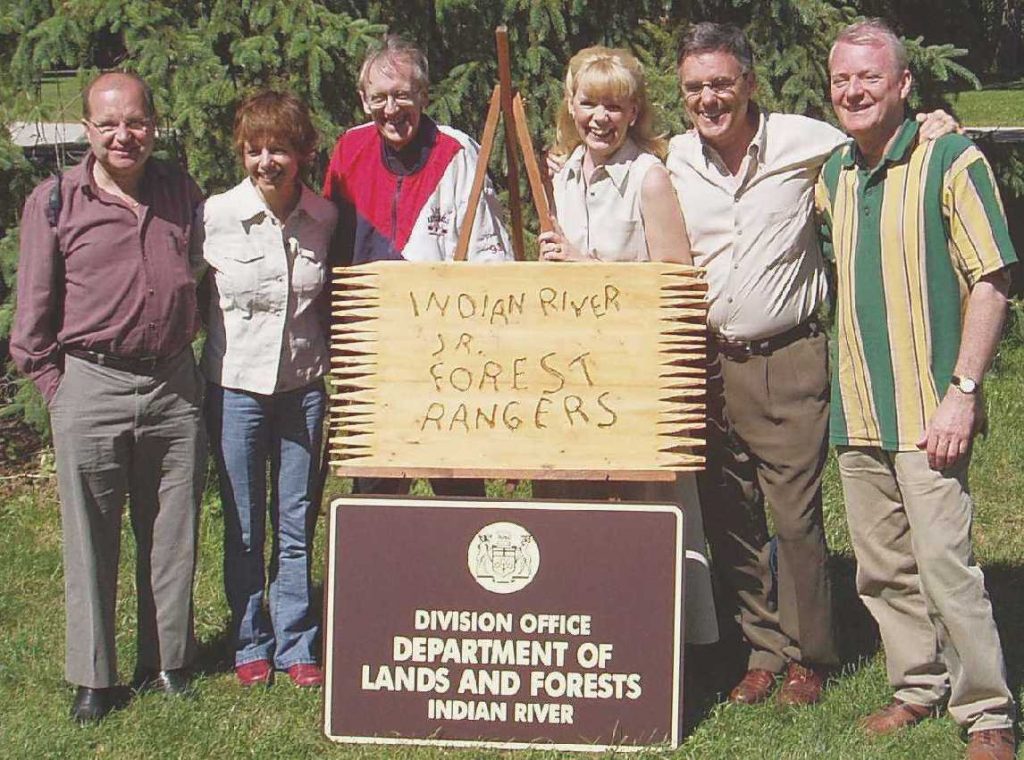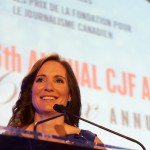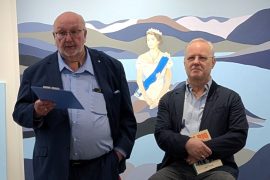
There’s something about childhood memories and cherished TV shows that can turn adults back into six year olds.
I had just such a Cocoon moment Saturday in Kleinberg, Ont., home of the Cinespace Film Studio.
This very off-the-beaten track production centre is tucked into a valley in the woods off Hwy 27. about 20 minutes north of Toronto. Back in 1963 to ’65, it was home to The Forest Rangers.
Canada’s first weekly colour TV series featured a bunch of Junior Rangers who helped patrol and conserve the woods near the mythical village of Indian River. These kids also helped RCMP Sgt. Scott (Gordon Pinsent), Ranger Keeley (Graydon Gould) and local Metis-Ojibway guide Joe Two Rivers (Michael Zenon) round up the occasional thief, poacher and even a spy or two.
The jaunty theme, which makes you just want to skip a rock over an open lake, was composed by John Hubert Bath; you can watch the opening titles and listen to the theme music here.
The series presented a rustic, woodsy and ultimately wholesome image of Canada, much as Skippy The Bush Kangaroo–imported around the same time–offered an Instagram-tinged snapshot of Australia.
There were many busy Canadian guest stars, including Gerrard Parkes, Barbara Hamilton, Cec Linder, John Vernon and Jan Rubes. Cost per episode in the mid-’60s? $25,000. Memories Saturday? Priceless.
All nine original Junior Rangers, plus Pinsent, gathered back at the studio to celebrate the 50th anniversary of the series. They were joined by 260 fans, some who had come from as far away as Ireland, London and the United States. The series was a very successful export, airing at one time in over 40 countries.

The Junior Rangers all have fond memories of make up lady Valerie Shand. “She kind of looked after us, she was like our den mother,” said Jago. Shand, as well as original editors, stunt doubles and other crew members, were at the reunion. Eric Till, who directed several episodes, also made the scene.
The original producer, Maxime Samuels, died in 2001. Exotic and eccentric according to many in the room, she was feared and admired by the child stars who tried their best to keep out of her office. Samuels nephew attended the reunion and described her as a woman who was as passionate about her series “as she was about her four husbands.” An article published at the time and pinned up on a wall on the soundstage described her as the “Cleopatra” of the set.
A woman in charge of a TV series back then must have seemed exotic indeed.
Occasionally the kids would get called into the office for mischief. One recalled a game of hide and seek played way up on the old wooden skywalks high over head on the soundstages. If the insurance company only knew.
I spoke with four of the original child stars–Jago, Conway, Rex Hagon (who played Peter Keeley and went on to a stint as one of the many hosts of The Polka Dot Door) and Peter Tully (who played rich kid Mike Forbes).Tully admitted Saturday’s experience was “unreal in a wonderful kind of way.” Most hadn’t been back to the site since the series was shot. “It’s a time warp coming back.”
The outdoor fort set is long gone, unfortunately. An old log cabin down near a river on the grounds may have been used in a few shots.
A fan who attended the reunion was scouring the grounds several years ago. The boy found something and gave it to his father. It was a knife with the word “Chub” on the handle.
The knife was presented to Endersby Saturday and he graciously insisted it stay in the hands of the collector.
Pinsent joked that playing a Mountie so often (besides The Forest Rangers, he donned the red tunic for Due South as well as A Gift to Last, which he also wrote) was on old actor’s trick; wear red and you’ll upstage the other actors.
An actual RCMP officer, Terry Russel, stopped by in full dress uniform to commend Pinsent for his performance on the show. The Mountie told fans Pinsent’s crimson cop really rang true and was an inspiration to several RCMP officers who grew up watching the series.
Other fans also stood and offered testimonials about how the series led to a lifelong sense of conservation and love of the outdoors. Others said they got into scouting because of the series.
Hagon thinks the series offers a wistful window on a kinder, gentler time. “There’s very little violence in The Forest Rangers,” he points out. It’s all about kids and adventure. The actors are all proud of the association and were humbled that the fans felt the same way.
The Forest Rangers was just so damn Canadian, a pre-Expo blast of the true north strong and free. That it all took place on several acres of woods north of Toronto–a valley where housing developments encroach ever closer–tells you everything about the changing face of Canada these past 50 years.
One little postscript: I have a personal connection to the studio grounds at the fabled Circle M Ranch. Back in the mid-’70s–a decade after The Forest Rangers wrapped–I snuck onto the studio grounds with some friends and we shot a little 16mm film on a western set standing in a field area. The film was called Saddle Sores, a Bullock, Brioux and Kerwin (BBK) high school production.
It was sort of a dollar-ten Three Amigos. A friend knew of the set because she stabled her horse nearby. We rented one other horse for ten bucks and I spent another $40 on B&W film.
The set was amazing, it had a saloon with swinging bar doors, a jail, plenty of barrels to jump in and out of and other wooden facades. We shot there, in the sunshine, one entire day and nobody said, “Hey you kids–get outta here!”
Thirty-eight years later, I finally put two-and-two together: we shot Saddle Sores on the site of The Forest Rangers. Cool!







4 Comments
The United Artists released Hudson’s Bay (1959/60, b&w), about the Hudson Bay Company’s Fur Traders, apparently also used the same Toronto area fort location.
I guess this doesn’t quite count, but MGM-Tv’s Northwest Passage (’58/59), was filmed in color from Hollywood. It was about early English & French settlements around the St. Lawrence / Hudson River region. Non-violence? One of its available episodes (incl. in a 2007 $16 Mill Creek Ultimate TV Westerns DVD set) features a father-son knife fight. Sergeant Preston of the Yukon was another early (’55-58) Canadianish yet filmed-in-U.S. series made in color.
A filmed in Pickering / Toronto ‘Hawkeye, Last of the Mohicans’ (1957, b&w) is also included with that above mentioned 29 series / 150 episodes’ DVD set.
I had no such Canuck-found luck with a twinned ‘Best of TV Detectives’ DVD set. I also hadn’t known if there was ever a matching sitcom set.right
I first saw The Forest Rangers in colour in 1969 when full colour came to British TV, what lovely Canadian scenery.
Like Alan I watched this as a kid in 1969. Is there a DVD available to purchase?
I get nostalgia when I see this show after so many years. Society certainly has changed for the worst when you compare FR with current kid’s shows.